Existed: 1926 – 1972 Constructed 1926 | Length 2,575 km | |
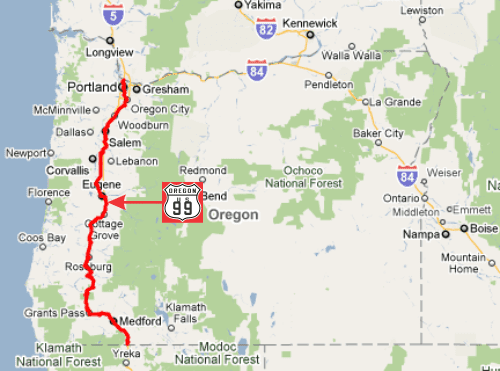 | ||
States: California, Oregon, Washington | ||
U.S. Route 99 (US 99) was a main north–south United States Numbered Highway on the West Coast of the United States until 1964, running from Calexico, California, on the US–Mexico border to Blaine, Washington, on the U.S.-Canada border. It was assigned in 1926 and existed until it was replaced for the most part by Interstate 5. Known also as the "Golden State Highway" and "The Main Street of California", US 99 was important throughout much of the 1930s as a route for Dust Bowl immigrant farm workers to traverse the state. Large portions are now California's State Route 99 (SR 99), Oregon Route 99, 99W, 99E and Washington's SR 99. The highway connected to British Columbia Highway 99 at the Canada–US border.
Contents
- Oregon
- Washington
- History
- Decommissioning
- State Highway 99
- California
- US Route 99W Oregon
- US Route 99E Oregon
- US Route 99 Alternate Washington
- Legacy
- References

Oregon
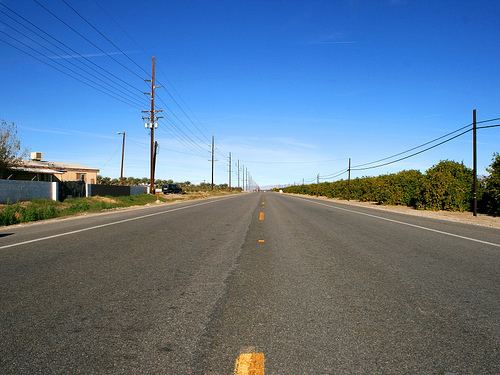
The former route of U.S. Route 99 in Oregon mostly follows routes currently signed as Oregon Route 99, 99E, and 99W. The primary exception is from the California–Oregon state border north to Ashland, Oregon, where U.S. 99 is currently named Old Highway 99 S from the state border to Exit 6 of Interstate 5. The former route is coterminous with Interstate 5 from Exit 6 to the junction of Oregon Route 99 in Ashland.
Washington
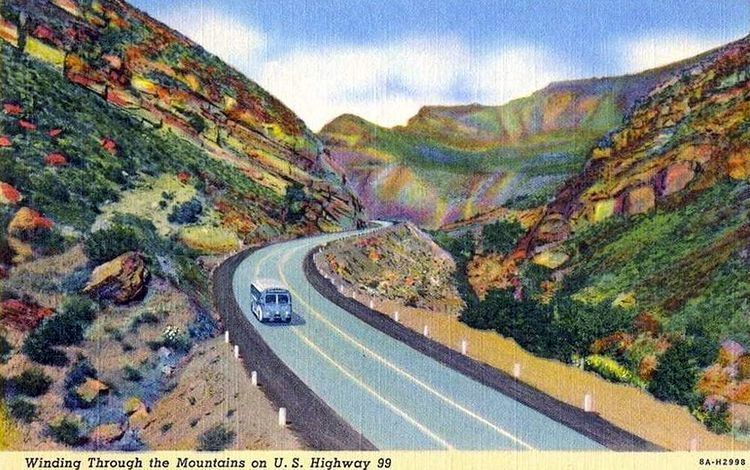
Unlike California and Oregon, much of the former route of U.S. Highway 99 in Washington exists as local roads and regular city streets; only the route from Fife to Everett still retains the official "99" moniker (as State Route 99). The following is a simplified list of Washington counties and cities that portions of the old route traverse, along with their local names.
History

An extensive section of this highway (over 600 miles), from approximately Stockton, California to Vancouver, Washington, follows very closely the track of the Siskiyou Trail. The Siskiyou Trail was based on an ancient network of Native American Indian footpaths connecting the Pacific Northwest with California's Central Valley. By the 1820s, trappers from the Hudson's Bay Company were the first non-Native Americans to use the route of U.S. Highway 99 to move between today's Washington state and California. During the second half of the 19th Century, mule train trails, stagecoach roads, and the path of the Central Pacific railroad (later the Southern Pacific railroad) also followed the route of the Siskiyou Trail. By the early 20th Century, pioneering automobile roads were built along the Siskiyou Trail, including most notably the Pacific Highway. The Pacific Highway ran from British Columbia to San Diego, California and is the immediate predecessor of much of U.S. Highway 99. The highway was continuous pavement by the middle 1930s.
Decommissioning
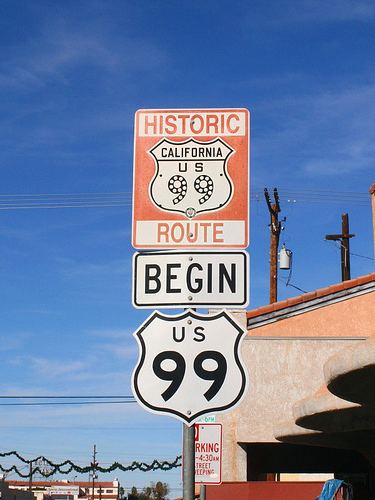
By 1972, US 99 was completely decommissioned with the completion of I-5 in Washington and California, but the highway's phasing out actually began July 1, 1964 due to the passage of Collier Senate Bill No. 64 on September 20, 1963. The bill launched a major program designed to greatly simplify California's increasingly complicated highway numbering system and eliminate concurrent postings like the aforementioned 60/70/99. The highways that replaced it are:
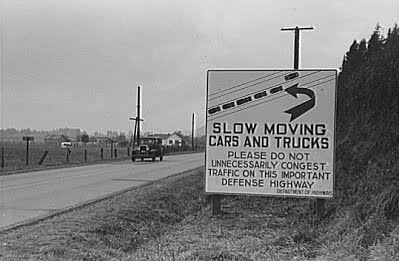

In 1972, the AASHTO gave permission to the Oregon State Highway Commission to retire US 99W, US 99E and US 99 from the national system. The final segments of US 99 were then decommissioned and re-organized into OR 99W, OR 99E and OR 99.
State Highway 99
All three states have replaced some portions of US 99 with state highways of the same number:
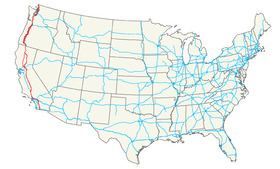
California
Oregon
Washington
US Route 99W (Oregon)
US 99W in Oregon ran from Junction City, where it diverged from highway 99E, to Portland. The US designation was redesignated as Oregon Route 99W in 1972. In 1994, Oregon 99W was truncated to Interstate 5 in Tigard at Exit 294. As such, highways 99W and 99E no longer converge.
US Route 99E (Oregon)
US 99E in Oregon ran from Junction City, where it diverged from highway 99W, to Portland, but using a different route than highway 99W. A segment between Albany and Salem is cosigned with Interstate 5. Like its western counterpart, US 99E was changed to state highway 99E in 1972. Its current northern terminus is at Interstate 5 in Delta Park near the Portland Expo Center at Exit 307.
US Route 99 Alternate (Washington)
Two routes in Washington were designated US Route 99 Alternate, at the same time and in both passing through Bellingham.
In 1931, the current Lake Samish route of US 99 was constructed (which is similar to the route of today's Interstate 5), and US 99 was moved to this new road. As a result, the old road, Chuckanut drive, was designated as US 99 Alternate. Today this route is Washington State Route 11.
Beginning in 1926, US Route 99 Alternate began in downtown Bellingham and went due north to Lynden and then to Canada along Guide Meridian Road. This highway is today known as Washington State Route 539.
Both of these routes were renumbered 1964 when the state decommissioned all of US Route 99 and scrapped its entire highway system to replace it with a new system.
Legacy
Travel on U.S. Route 99 is highlighted in a long poem by Gary Snyder, "Night Highway 99".
